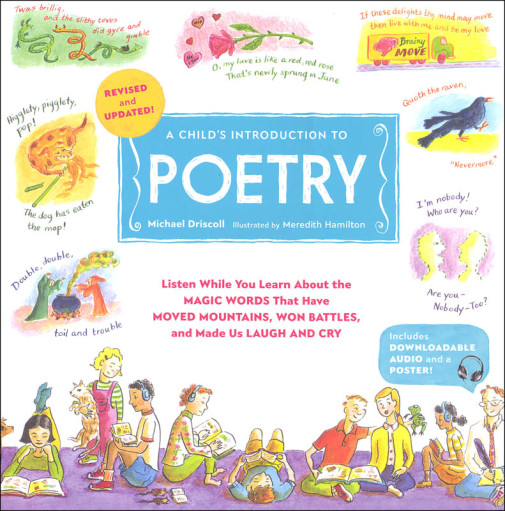This book by Michael Driscoll introduces young students to poetry and famous poets in a way they will find interesting and fun. The first part of the book describes the various types of poetry like nursery rhymes, villanelle, limerick, narrative verse, ballad, sonnet, free verse, and more. Each type of poem is described quickly and clearly, and then the book contains famous examples of that type of poem. Kids can either read the poems themselves, or play the accompanying downloadable audio (located online) when prompted. The digital audio files include all of the poems in the book read alternately by a man and a woman with pleasant voices. Colorful boxes tell readers when to play an audio track, as well as sharing extra information about the poems or their authors. "Words for the Wise" boxes are included on each page, defining words in the poems that children may not be familiar with. "If You're a Poet, You Should Know It" boxes are also included throughout the book, with vocabulary words related to poetry defined (like stanza, alliteration, etc.). After all the types of poetry are introduced, explained, and exampled, the second half of the book is dedicated to famous poets. A quick biography of each poet is included and then excerpts from that person's poetry are shared. These excerpts (sometimes full poems) are also included on the audio files. Text boxes on the pages give a summary of the poems and explain confusing parts. Fun, colorful, little drawings accompany these poems (as well as those earlier in the book) and add to the charm of the book. Homer, Shakespeare, Blake, Dickinson, Kipling, Sandburg, Heaney, Angelou, and many more are included in this section of the book. Overall, 64 famous poems are included in the book (and on the downloadable audio files). With the easy-to-understand explanations and numerous examples, young students will be grasping and enjoying poetry in no time. Book includes a listing of all 64 audio tracks and information on how to find them online. 10.25" x 10.25". 96 pages, hc. ~ Rachel


